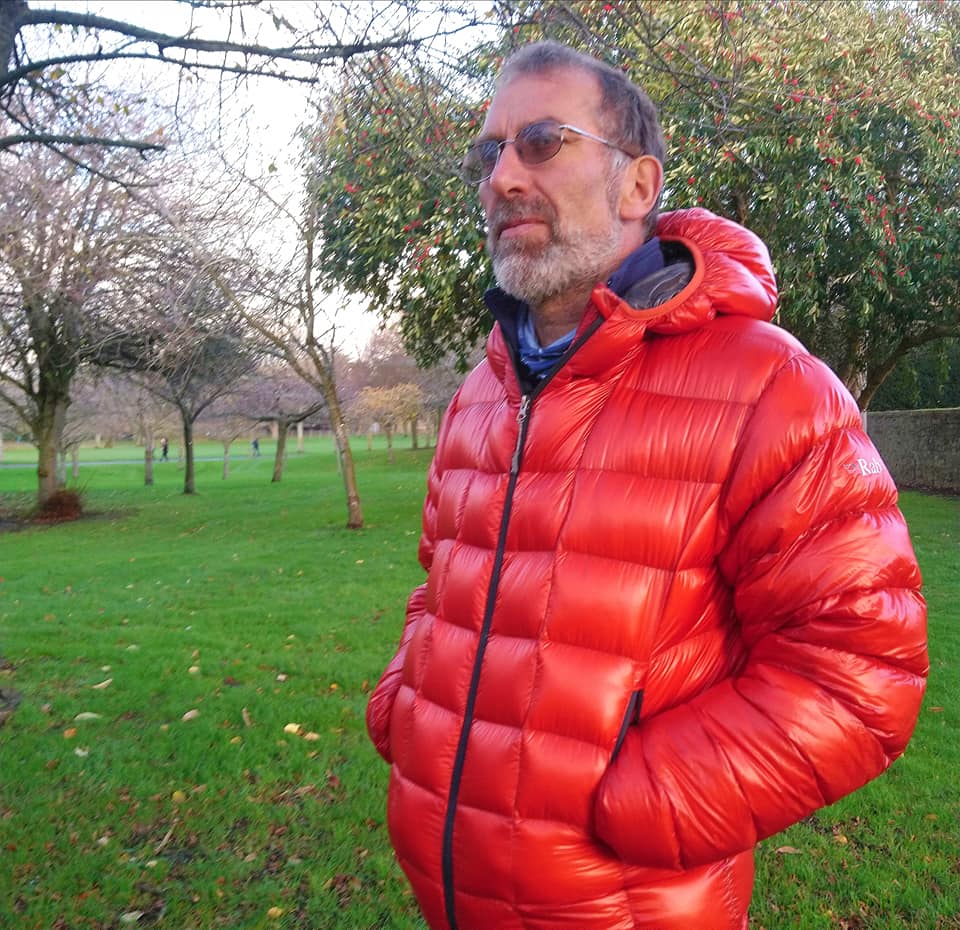Choosing an Insulated Jacket

December 1st marks the meteorological start of winter and snow has already fallen in the Scottish hills and on the Macgillicuddy Reeks in Co. Kerry. If there is a chance to get out into the mountains this winter you might be considering getting an insulated jacket to keep out the cold. Here is what you need to know before you buy.
Down or Synthetic?
The insulation used in ‘puffy’ jackets falls into 2 broad categories, down and synthetic.
Each has its advantages and drawbacks.
Down is an organic product, feathers to be precise, and can be either goose or duck down.
For a high warmth to weight ratio down is the way to go and therefore it is popular for extreme cold and for expedition use, such as Kilimanjaro or Everest base camp treks.
The warmth of down jackets is measured in ‘fill power’, which is the amount 1 ounce of down will ‘loft’. The higher the fill power, the warmer the down will be for its weight. Anything above 750 would be considered high quality, 600 or so is medium.
When it gets wet down will clump together and loose its insulating properties, it is effectively useless. To counter this some manufacturers now coat the down with hydrophobic (water repelling) chemicals. This has proven only partially successful and down will still fail to insulate you effectively in wet conditions.
There is also an ethical issue with down (it is after all the insulating feathers of birds), particularly in relation to how the birds are kept and treated. Reputable companies are working to ensure that their down is now ethically sourced.
Down is more difficult to care for and requires careful cleaning and drying.
Synthetic insulated jackets use fine spun polyester fibres that mimic the properties of down, they are improving all the time and are approaching the levels of warmth offered by down. However, they remain heavier than down for the same levels of insulation.
The big advantage of synthetic fill is that it works just as well when it is wet. This is hugely important in our typical cold wet winters and would make it my first choice for Scottish winter mountaineering.
Though somewhat heavier than a down jacket, a synthetic insulated jacket is cheaper to buy, is easier to care for (just bung it in the washing machine) and does not involve animal products.
Jacket Features
Both down and synthetic jackets have an outer fabric that is windproof and water resistant (but not waterproof). Some jackets designed as midlayers or for high activity levels will be more breathable and therefore less wind and water resistant.
Most insulated jackets have a ‘puffy’ look, this is produced by the baffles, individual sown pockets that keep the insulation in place.
On some jackets these baffles are large and can be sown through (cheaper) or of a box-wall construction (warmer). Jackets with big baffles are bulkier but offer greater insulation properties, they are used on jackets designed as outer wear for cold and dry conditions.
Jackets with narrower baffles are less bulky and pack down much smaller. They are designed to be used as a mid-layer but are often used as outer wear too.
They offer less insulation than their big baffle counterparts and will often be of a slim fit with elasticated hems and cuffs to ensure air is trapped inside.
An insulated hood is a great benefit in very cold conditions, but it could get in the way if you are using it as a mid-layer.
Hand warmer pockets are essential, make sure the pockets sit under the insulation, or you won’t get any benefit from them. A chest pocket is useful to keep your mobile phone warm and working.
Some jackets have elasticated cuffs and hems, make sure if these are adjustable that they are sufficiently close fitting to trap air inside and keep you warm.
Some jackets come with their own stuff sacs in one of the pockets, this is a great way of compressing the jacket down to store in your pack until it is needed.
Finally, note that an insulated jacket is not a substitute for a good waterproof jacket. It may keep off the occasional shower or snow flurry, but will need to be layered under your regular waterproofs when rain sets in.
Russ Mills runs Mountaintrails, a guiding hiking and mountain training business based in Dublin.
